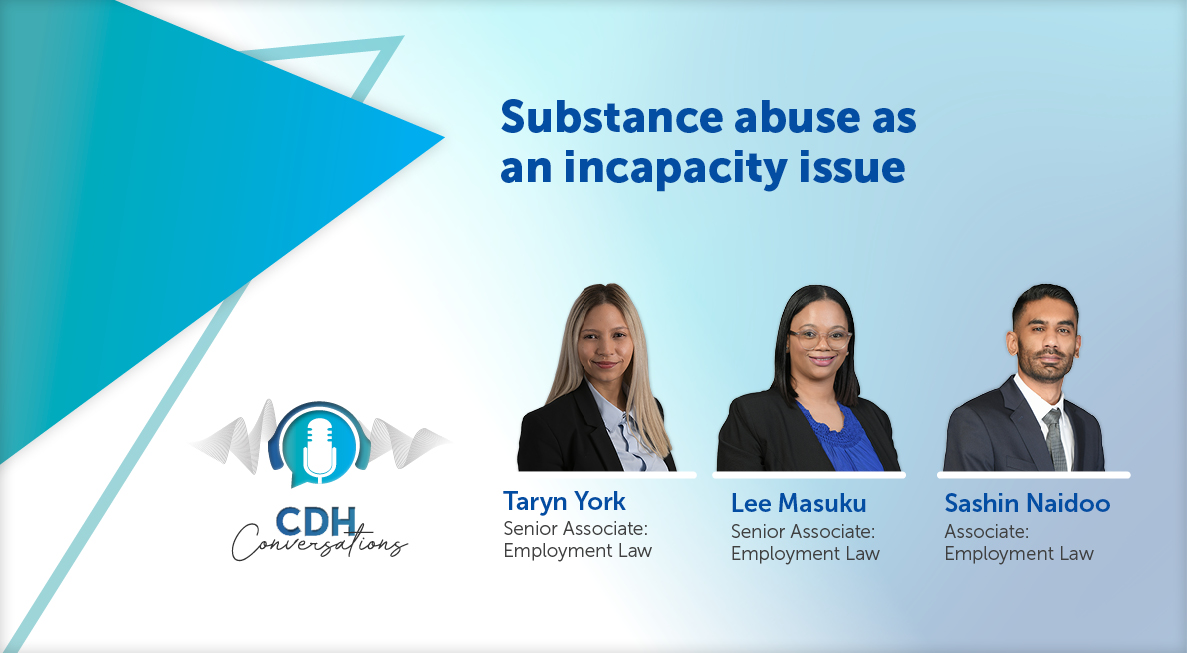Extension of period within which to submit the first Mining Charter 2018 annual reports and other extended MPRDA time-frames
Despite Mining Charter 2018 becoming effective upon being gazetted in September 2018, section 8.9 of the amended Mining Charter 2018 provided that existing mining right holders, and existing licence and permit holders must implement the Mining Charter 2018 as from 1 March 2019. Section 6 then required mining right holders to report on their compliance with the prescripts of Mining Charter 2018 on or before 31 March 2020. This effectively required holders to report on compliance before the expiry of the full first year under Mining Charter 2018. Given the onerous reporting obligations imposed by this charter, this would have posed an almost insurmountable hurdle to many mining companies.
Then Covid-19 intervened! On 11 April 2020, the Minister gazetted Directions under the regulations of the National Disaster Management Act 57 of 2002 as part of the measures to address, prevent and combat the spread of COVID-19. These Directions provide extensions to certain time periods stipulated in the Mineral and Petroleum Resources Development Act 28 of 2002 (MPRDA) and the MPRDA Regulations. For purposes of compliance reporting under the Mining Charter 2018, Direction 5.3(a) is the critical Direction. This provides that “(T)he date for submission of the first annual report on the Broad Based Socio- Economic Empowerment Charter for the Mining and Minerals Industry, is hereby extended from 31 March 2020 to 1 June 2020”.
This extension of time, although not as lengthy as many mining companies would have preferred, comes as a welcome relief to an already embattled industry.
The further Directions provide that:
5.1 Directions relating to permissions, rights and permits as contemplated in the MPRDA
a) The following timeframes are hereby extended, or deemed to be extended, by the number of days of the duration of the lockdown period of the national state of disaster declared for the COVID-19 pandemic:
(i) Timeframes prescribed in terms of the MPRDA in relation to applications for and processing of permissions, rights and permits, which periods fall within the duration of the lockdown period of the national state of disaster;
(ii) Timeframes applicable to renewal of permissions, rights and permits which fall either within the duration of the lockdown period of the national state of disaster or within a period of 60 days from 27 March 2020 (“days” means calendar days, excluding Saturdays, Sundays and public holidays); and
(iii) Timeframes relating to appeals prescribed under Regulation 74 of the Regulations promulgated under the MPRDA as amended.
b) An extension of a time period granted by a functionary referred to in paragraph 4.1(a), the period of which falls between 27 March 2020 and the termination of the lockdown period of the national state of disaster is hereby extended, or deemed to be extended, by the number of days of the duration of the lockdown period of the state of national disaster declared for the COVID-19 pandemic.
5.2 Directions relating to directives, notices, orders and instructions
a) Timeframes stipulated in directives, notices, orders and instructions issued in terms of the MPRDA and which falls within the duration of the lockdown period of the national state of disaster, are hereby extended, or deemed to be extended, by the number of days of the duration of the lockdown period of the national state of disaster declared for the COVID-19 pandemic.
b) Despite the provisions of sub-paragraph (a), directives, notices, orders and instructions issued as urgent measures to prevent imminent harm or damage to persons, animals, the environment or property, must be complied with within the timeframes stipulated therein. (These would include stoppage instructions and notices under sections 54 and/or 55 of the Mine Health and Safety Act 29 of 1996, certain MPRDA section 93 directives, National Environmental Management Act 107 of 1998 notices and directives (directive in terms of section 28(4) to cease operations and commence taking certain measures within a specified period of time; directive in terms of section 30(6) in respect of the control of an incident; directive in terms of section 30A in respect of an emergency incident; compliance notice in terms of section 31L), directive in terms of section 16(3) of the National Environmental Management: Waste Act 59 of 2008 to address the consequences for failure to observe the general duty of care, directive in terms of section 22A(4) of the National Environmental Management: Air Quality Act 39 of 2004 resulting from conducting an activity without a provisional atmospheric emission licence or an atmospheric emission licence, directives in terms of the National Water Act 36 of 1998 and issued under section 19 for the prevention and remedying effects of pollution; section 20 for the control of an emergency incident; or section 118 for control measures for a dam with a safety risk).
5.3 Directions relating to submission of reports
a) The date for submission of the first annual report on the Broad Based Socio-Economic Empowerment Charter for the Mining and Minerals Industry, is hereby extended from 31 March 2020 to 1 June 2020.
b) Save for the report referred to in sub-paragraph (a), timeframes for submission of reports to be submitted in terms of the MPRDA and which falls within the duration of the lockdown period of the national state of disaster, are hereby extended, or deemed to be extended, by the number of days of the duration of the lockdown period of the national state of disaster.
With a little over a month to go before the first annual report on compliance with the Mining Charter 2018 must be submitted, mining right holders should be cognizant of their obligations to progressively align their existing targets with those of the Mining Charter 2018.
The Ownership element provides for a five-year transition period, from date of grant, for applications that were pending on 27 September 2018, to comply with the new 30% Black Economic Empowerment (BEE) shareholding target. No specific annual targets have been set. New mining rights that were not pending on 27 September 2018 must comply fully with the 30% BEE shareholding requirements. Detailed provisions for reporting on the Ownership element have been set out in the Implementation Guidelines. Holders are referred to Tables A to G of these guidelines.
The Inclusive Procurement element provides a five-year transition period for Mining Goods (the first-year target is set at 10% of the procurement budget, second year 20% of the procurement budget, 35% of the procurement budget by third year, 50% of the procurement budget by fourth year and 70% of the procurement budget by fifth year) and a two-year period for Mining Services (the first-year target is set at 70% of the procurement budget and second year 80% of the procurement budget). In terms of the Implementation Guidelines, if mining right holders utilise contractors to undertake extraction and/or processing (crushing and concentration) of minerals on their behalf, any goods and services used by the contractors will be deemed to have been used by the mining right holder. Consequently, mining right holders will need to obtain procurement spend data from their contractors for purposes of reporting on the procurement element. Mining right holders are required to report compliance annually in respect of inclusive procurement, supplier and enterprise development in accordance with Tables H, I, J, K, L and M contained in the Implementation Guidelines.
The Employment Equity element also provides a five-year period for progressive implementation of the targets, without stipulating annual targets to be achieved. However, holders were required to have submitted a five-year plan indicating progressive implementation of the provisions of Employment Equity element targets within a period of six months from the date of publication of the Mining Charter, 2018. In terms of the Implementation Guidelines, mining right holders must submit annual reports setting out the information specified in Table T of the Implementation Guidelines (pages 45 and 46) in numerical form. Furthermore, the categories/levels of employment must be broken down in detail (including salary bands and grading) in accordance with the income differential template provided in Table U of the Implementation Guidelines (pages 47 and 48).
No transition period is mentioned for Human Resource Development. The Implementation Guidelines set out reporting templates that mining right holders must complete and submit on an annual basis for purposes of proving compliance in respect of essential skills development activities, graduate training programmes, and research and development initiatives. Holders are referred to (i) Table Q on page 40 of the Implementation Guidelines for the template relating to reporting Human Resources Development in respect of employees and to (ii) Table R on page 41 of the Implementation Guidelines for the template relating to reporting human resources development in respect of non-employees. In addition to the information that is required to be reported in terms of Tables Q and R, mining right holders must also submit a table demonstrating how the leviable amount has been calculated.
In regard to Mine Community Development, mining right holders must submit annual reports to the DMR to account for the extent of their compliance with their SLP commitments. Such reports must take the form of the template in Table S of the Implementation Guidelines (refer to Table S on pages 43 and 44 of the Implementation Guidelines for an indication of the information that is required).
Reporting on Housing and Living Conditions is governed by Table W on page 51 of the Implementation Guidelines. Mining right holders must ensure maintenance of single units, family units and any other arrangements agreed upon with workers. Furthermore, mining rights holders must submit certified copies of any housing and living conditions agreements that do not form part of a collective agreement.
Given the scope and the complexity of the compliance reporting required under the Mining Charter 2018 and the phased return to economic activity that will follow the national lockdown, it is likely that the current extension of time may be insufficient for mining companies to fully meet their reporting obligations.
The information and material published on this website is provided for general purposes only and does not constitute legal advice. We make every effort to ensure that the content is updated regularly and to offer the most current and accurate information. Please consult one of our lawyers on any specific legal problem or matter. We accept no responsibility for any loss or damage, whether direct or consequential, which may arise from reliance on the information contained in these pages. Please refer to our full terms and conditions. Copyright © 2026 Cliffe Dekker Hofmeyr. All rights reserved. For permission to reproduce an article or publication, please contact us cliffedekkerhofmeyr@cdhlegal.com.
Subscribe
We support our clients’ strategic and operational needs by offering innovative, integrated and high quality thought leadership. To stay up to date on the latest legal developments that may potentially impact your business, subscribe to our alerts, seminar and webinar invitations.
Subscribe




